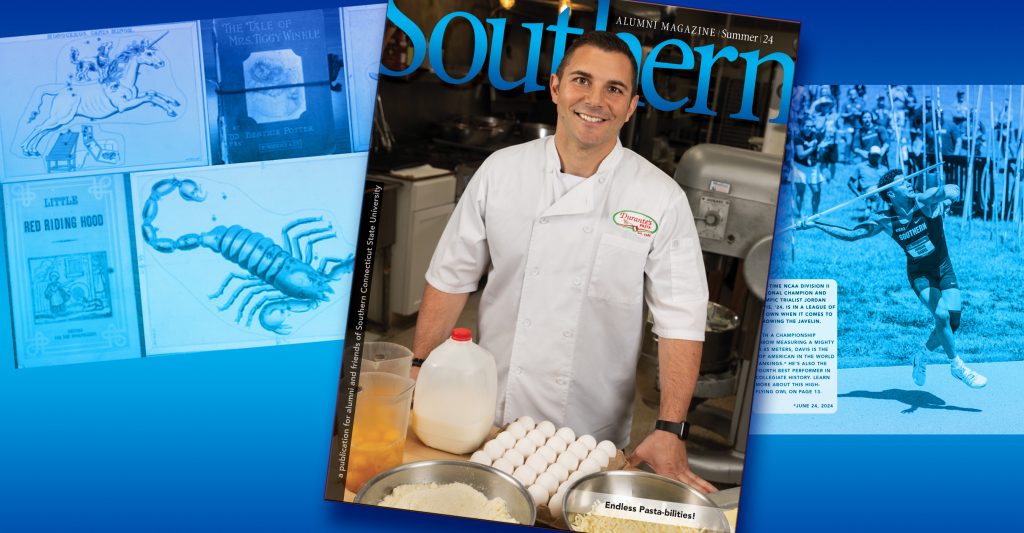Each year, Southern faculty members are invited to share their research through a campus photo competition, which was organized this year by university photographer Isabel Chenoweth. It’s a challenging but powerful task for the researchers: to spotlight months, often years, of scholarship in a single image. The six winning photographs included in these pages have a wide focus. The professors’ research interests include the life of the 14th century Vietnamese Buddhist monk physician Tuệ Tĩnh, the impact of sand mining, the small clam Lyonsia floridana, archeology, and the blue economy. The images were shot in South Africa, Vietnam, and Tanzania and in the U.S. at Sanibel Island, Fl., and a ranch in the Southwest. Each destination is likely to host future visits by Southern’s intrepid faculty researchers. Today, armchair travelers are invited to tag along to learn a bit about each professor’s research and glimpse some of the amazing sites they’ve seen along the way.
Congratulations to the winning photographers: first place, Robert Prezant and Jonathan Weinbaum; second place, C. Michele Thompson and Miriah Kelly; and third place, Scott Graves and Kelly.
ROBERT PREZANT, PROVOST AND VICE PRESIDENT FOR ACADEMIC AFFAIRS
Photo featured above.
More than 160,000 visitors annually explore Sanibel Island, Fl., and Robert Prezant is happy to be among them. The island — widely considered the “seashell capital of the U.S.” — is renowned for the millions of shells that wash ashore on its beaches. It’s a natural wonderland for conchologists, those who study mollusk shells, and a magnetic draw for Prezant, a malacologist. A malacologist studies mollusks (phylum Mollusca), which includes invertebrates such as clams, mussels, snails, octopuses, scallops, oysters, and chitons.
In this case, the small clam Lyonsia floridana brought Prezant to the Sunshine State. He’s long studied the bivalves, which have “unique peripherally lined glands that produce an adhesive allowing the clam, which is very thin shelled, to cement sand grains to the outside of their shell,” he explains. The benefits to the clams are multifold: protection, camouflage, and in-substratum stability. Prezant also has studied bivalves’ eyes. “Yes, many clams have eyes,” he notes. “These eyes are surprisingly complex and respond to shadows allowing the clam to retract in the presence of a predator.”
As for the photo? Prezant shot it while conducting research at J.N. “Ding” Darling National Wildlife Refuge, part of the largest undeveloped mangrove ecosystem in the U.S. “It was during one of these field expeditions when a little blue heron hunting for dinner within 25 feet of me, latched onto a mangrove crab,” sums the scientist. “Fortuitously, I had camera in hand.”

JONATHAN WEINBAUM, ASSOCIATE PROFESSOR OF BIOLOGY
In 2009, paleontologist Jonathon Weinbaum was fossil hunting in Arizona’s Petrified Forest National Park, when he received a question that would change his life. Colleague William Parker, now the park paleontologist, had been contacted by a local rancher: Did he know anyone interested in checking his property for fossils? Weinbaum happily signed on. “I went out there and found fossils right away,” he says.
The ensuing years were marked by numerous discoveries, mostly fragments rather than complete fossils, but important, nonetheless. “Part of what we do as paleontologists is paleo-ecological surveys. We’re trying to understand what organisms lived in a specific area during a specific time,” says Weinbaum.
Southern students often join Weinbaum’s research team in Arizona during academic breaks in the summer. In 2014, during the final days of that year’s expedition, one of those students located a promising site and asked Weinbaum to look at the bones on the surface and coming out of the ground. “When we dug those out, we found they were associated with each other, which is really rare,” says Weinbaum. “In 2015, we came back and excavated a complete skeleton.”
A glance at his award-winning photo, shows the blue tarp that covers the site where the skeleton of Postosuchus kirkpatricki was found. An ancestor of the crocodile, it evolved in the Triassic Period and dominated land-based ecosystems.
Postosuchus, which walked on two legs like a predatory dinosaur and was endothermic, still captures Weinbaum’s imagination. In June 2024, he shared his expertise in paleontology in Argentina as a Fulbright Specialist. (The prestigious program is run by the U.S. Department of State.) He held a series of short courses and lectures on topics such as fossil preparation. He and colleagues also conducted research related to the brain of Postosuchus kirkpatricki.
As for the ranch in Arizona? “It’s a quarry now,” Weinbaum says, using a paleontological term for a site where many fossils have been removed. He sees similar potential in other ranch locations where fragments have been found. “It is a treasure trove of fossils at this one-square mile locality in Arizona,” he says.
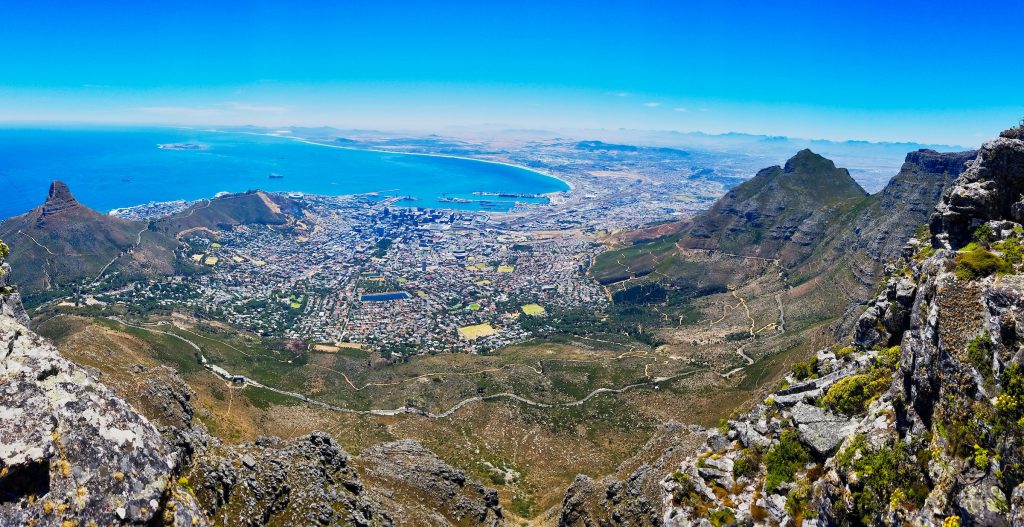
SCOTT GRAVES, PROFESSOR OF THE ENVIRONMENT, GEOGRAPHY, AND MARINE SCIENCES
Sand is the world’s second most consumed natural resource following water,* used to combat erosion and make bricks, concrete, glass, silicon chips, and more. Sand also is a limited resource, with over mining leading to a host of serious problems, including land erosion, flooding, and health issues among miners.
The topic is one of many examined in “Environmental Justice,” a study abroad course taught in South Africa by C. Patrick Heidkamp, professor of the environment, geography, and marine sciences. The course — offered at the undergraduate and graduate levels —provides students with an understanding of the social, economic, political, and environmental factors to consider when analyzing conflicts related to land use, water resources, and coastal development through the lens of environmental justice.
Fellow Southern Professor Scott Graves has volunteered on the trip many times, serving as driver, field assistant, and photographer. His winning photo of Cape Town, South Africa, was taken from Table Mountain in January 2023.
Former students also have felt a longtime pull to the region. Among them is Elizabeth Carlino, a doctoral candidate in the Department of Geography at Texas A&M University. Carlino earned two Southern degrees (an undergrad in anthropology in 2012 and a master’s in environmental education in 2020) and wrote her graduate thesis on the Cape Town water crisis. Today, she’s teaming up with Heidkamp and Graves on an expanded project on sand mining. “We are looking beyond the Cape Flats agriculture versus development issue to address the larger problem of sand mining and its impact on the environment, agriculture, water resources, and other issues,” sums Graves.
* United Nations Environment Programme
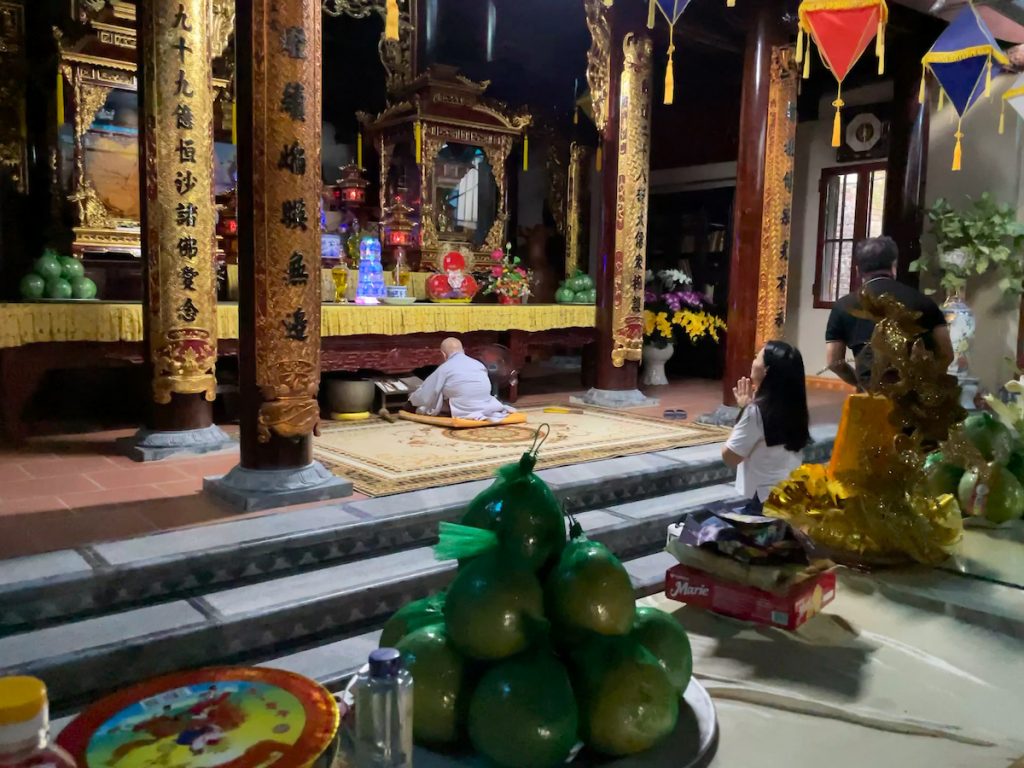
C. MICHELE THOMPSON, PROFESSOR OF HISTORY
Her research interests are broad — the history of science, medicine, and the environment in Southeast Asia — but C. Michele Thompson’s quest for knowledge often leads to Vietnamese Buddhist temples, monasteries, and shrines. “The older and more out of the way, the better,” she says.
Her winning photo, shot on May 28, 2023, is a perfect example, showing evening prayers at the Chùa Cổ Pháp Pagoda in the Bắc Ninh Province of northern Vietnam. The temple was established in the 10th century and rebuilt periodically. “The woman in gray, kneeling in front before the altar is a Buddhist nun. . . . She is chanting Buddhist sutras, which occurs every evening in every Buddhist temple throughout Vietnam as well as in many Buddhist temples all over the world,” says Thompson.
These visits are somewhat of a treasure hunt. “You never know what you’ll learn,” says Thompson, who has visited Vietnam some 40 to 50 times (she’s lost count) and typically has several research projects in various stages of development. Recently, she co-edited Fighting for Health: Medicine in Cold War Southeast Asia, published in January and distributed for the National University of Singapore Press by the University of Chicago Press.
This summer, she’s working on a biography on the 14th century Vietnamese monk physician Tuệ Tĩnh. “Many of the elements of his legendary biography represent what Buddhist monks in the 14th century in general meant to the people of Vietnam in terms of providing health care and social services,” says Thompson. She’s looking at reported aspects of that legendary life to determine “what is possible, what is impossible, and what is possible if done by Vietnamese monks in general rather than a single person,” she says.
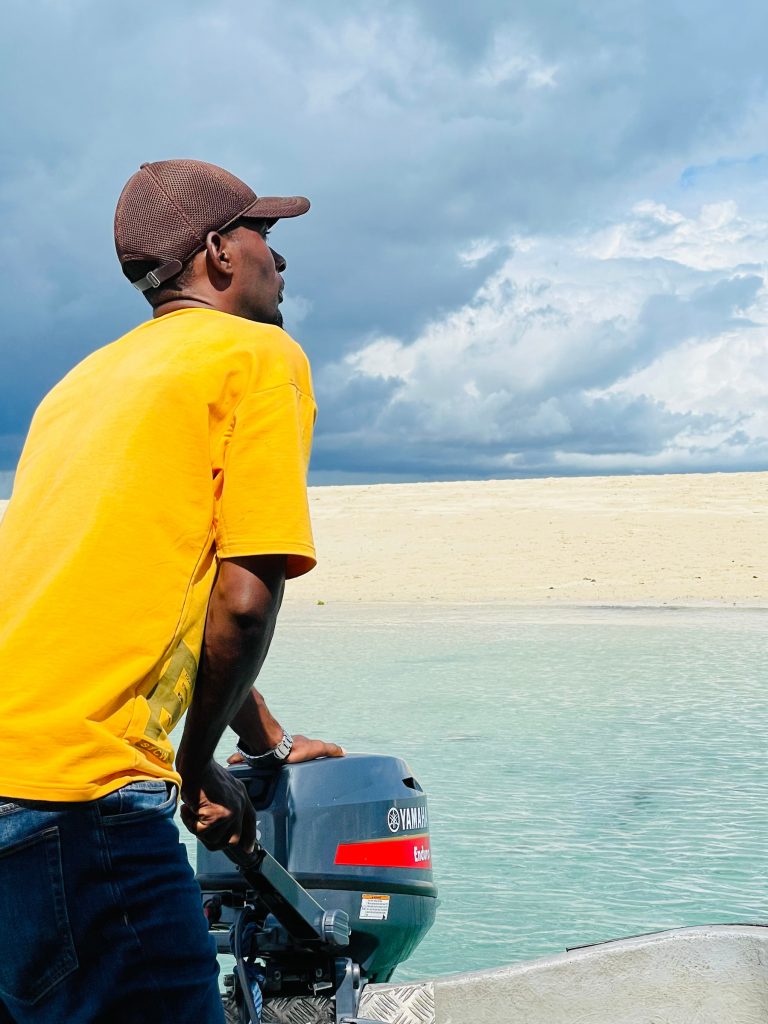
MIRIAH KELLY, ASSISTANT PROFESSOR OF THE ENVIRONMENT, GEOGRAPHY, AND MARINE SCIENCES
When it comes to research, Mariah M. Russo Kelly has impeccable timing. In May 2022, Zanzibar established its first-ever Ministry of Blue Economy and Fisheries. Soon after, Kelly was on the archipelago, her sights set on helping the Republic of Tanzania, which includes Zanzibar, successfully grow its blue economy — defined by the World Bank as sustainable use of ocean resources for economic growth, improved livelihoods and jobs, and ocean ecosystem health.
“I was looking at Zanzibar as a case study of a developing island nation that was doing two things at once: adapting to the impacts of climate change while also growing a sustainable blue economy,” says Kelly.
She’s seen numerous success stories. “One of the communities I am working with grows seaweed. They have been incredibly resourceful at translating their seaweed raw products into value-added products, everything from food and beverages to aesthetic balms and salves,” she says.
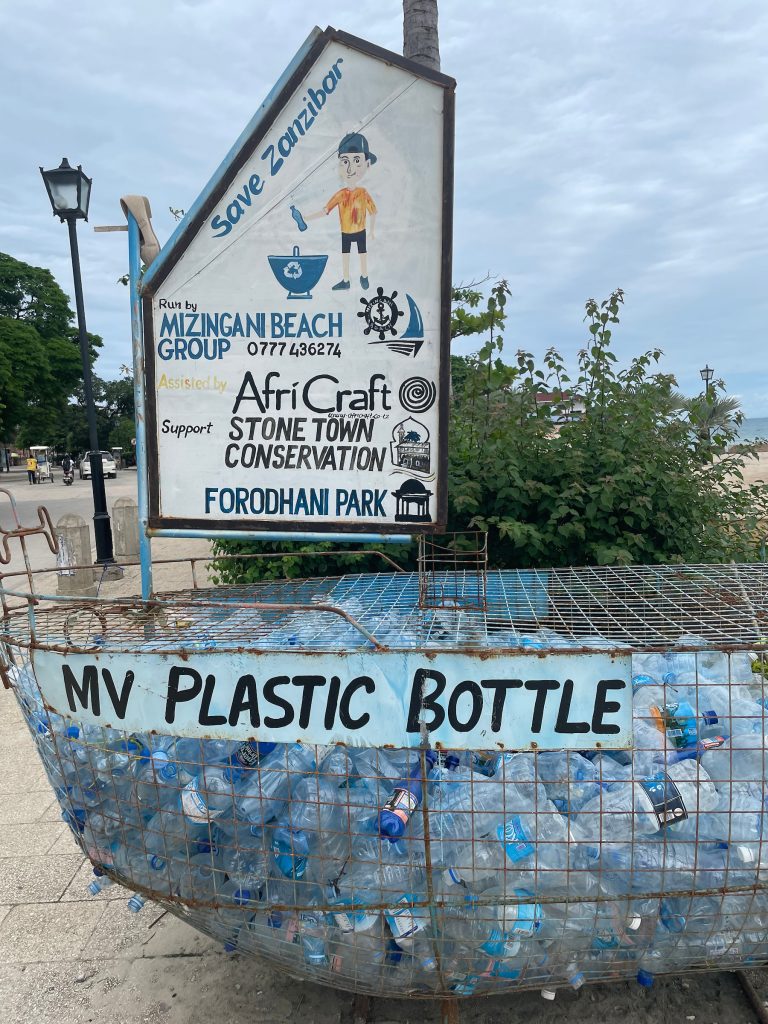
In one of her award-winning photos, Kelly zoomed in on a homespun recycling display in Stone Town, Zanzibar. “This park comes alive,” says Kelly, explaining that hundreds of vendors gather at the site almost every evening to sell food and merchandise. “The whole area becomes a community market. It is a great place to have recycling facilities,” she says.
Kelly’s second winning photo was taken when she and a fellow researcher traveled to Prison Island, home to Aldabra giant tortoises. “We were looking at the ecology, the water quality, and suitability for different blue economy opportunities,” says Kelly, who speaks nationally and internationally on ecological issues.
In 2021, Kelly also was instrumental in helping the university gain observer status to the COP (Conference of the Parties) global climate change conference organized by the United Nations. Southern students attended COP in Egypt in 2022 and the United Arab Emirates in 2023; plans are also in place for 2024 in Azerbaijan.
Read more from the summer 2024 issue of Southern Alumni Magazine
